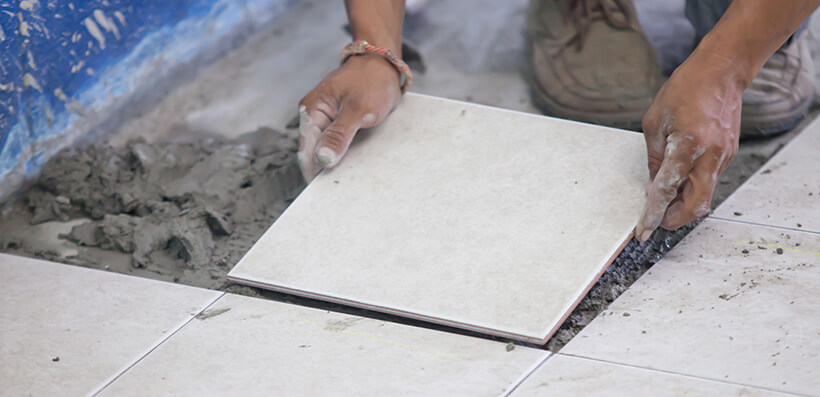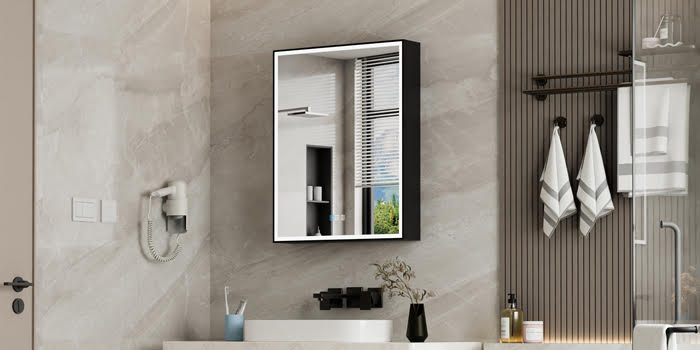Tile is an extensive choice for flooring, particularly in toilets and kitchens. It is durable, waterproof, long-lasting, and easy to clean. Although the tile is solid, it will in due course wear out, crack or peel off.
You should treat these problems immediately before they cause other problems, such as water seeping under a cracked tile and mold. You can also use the ocean glass subway tile to avoid these problems.
If you are new to flooring or ameture and interested in learning more, this article will help you understand what makes tile loose, how to fix loose tile, and even how to deal with broken tile. With this information and the right tools, you would be able to repair your own loose or broken tile yourself rather than having to pay someone else to do it.
What Makes Tile Loose?
You need to understand it before learning how to fix loose tile. There are several reasons why your tile becomes loose. Here we found some of the widespread causes:
House Movement. Every house takes time to settle down. The foundation can move, and the walls can move a bit, too. Typically when tiles are fitted, a minor perimeter is left between the wall and the tile to allow the natural movement of the house. If a perimeter has not been placed or if the house is installed beyond the perimeter, this can cause the tiles to loosen or crack.
Point Gap. One way to install the floor is to place one point of adhesive at the corner and one at the center of the bottom of the tile before pressing the tile into place. This method leaves too much space for the gaps between the tile and the surface underneath and can allow the tiles to come off.
Surface Differences. A large difference between the surface under the tiles and the tile material can lead to faster loss or cracking of the tiles. For instance, concrete can move and inflate at different speeds than tile. Make sure the tile material you are using is compatible with the surface that will be underneath.
Temperature Changes. Like most things, tiles expand with heat and contract with cold. It is a minor and imperceptible change in size, but when you multiply it by a large number of tiles, that makes many changes and changes over and over again. It stands to reason that thermal changes can cause the tiles to loosen or crack.
Adhesive Type. If the adhesive used to bond the tile to the bottom floor is not strong enough, the tiles will loosen more quickly. It is inevitable that most adhesives weaken over time, so even a high-quality adhesive can lead to loose tile. If the adhesive is much thick, particularly when using the above-mentioned spot bonding method, it leaves excessive space between the tile and the floor below. If the adhesive is too thin, it will not be strong enough to bond the tiles to the surface underneath for long.
How to Fix Loose Tile
Heat the tile with a preheated iron. Do not force the tile. It could break. By heating the tile with a hot iron, any adhesive that might still hold the tile will come off.
Pick up the loose tile with a spatula/putty knife. Gently lift the loose tile with a spatula, working from the center to the edges on all four sides. Set the tile aside.
Dissolve the adhesive on the floor. A cloth dampened with mineral spirits works very well to dissolve the adhesive.
Scrape off the old adhesive. Use your spatula to scrape off the dissolved adhesive. Remove everything before applying new adhesive. Make sure your scraper does not slip and does not damage the surrounding tiles. If you find a stubborn stain, use the iron again to heat the adhesive, then scrape.
Apply adhesive to the new tile and new floor. Cover the empty patch on the floor with adhesive.
Put the new tile in place. You must have enough gifts to make sure the tile is placed correctly.
Roll it up with the rolling pin. Strong pressure with the roller will remove the trapped air pockets that will raise the tile.
Wipe off excess adhesive. A cloth dampened with mineral spirits will wipe off any adhesive on the edges of the tile.
Cover the tile with books. Covering the tile with books for a day or two until you are sure that the bond cannot be broken.
How to Handle a Broken Tile?
You have already know how to fix loose tile. Your floor tile may break due a number of reasons. A tile is something like Humpty Dumpty: once it breaks, it cannot (or at least should not) reassemble. Don’t waste your time or resources reinstalling a broken tile.
It doesn’t look pretty and will likely cause more problems in the future. For instance, if you omit even a small gap when fixing the crack in a tile, you may allow water and air to seep underneath and cause mold or the tile to crack once more. Do yourself a favor and replace rather than repair a broken tile.
One thing to keep in mind when replacing a broken tile is that you need to be especially careful not to break the surrounding tiles. This may mean that instead of trying to lift the entire mosaic into one or two large pieces, you may need to break the mosaic into small pieces to facilitate removal.
First, cut the grout around the broken tile. Then try to lift the broken tile or, if necessary, break it into a few pieces with a hammer or drill. Be careful not to drill the tile on the surface below. Then vacuum and wipe away any residue so you can move on to the next step, replacing the tile.




